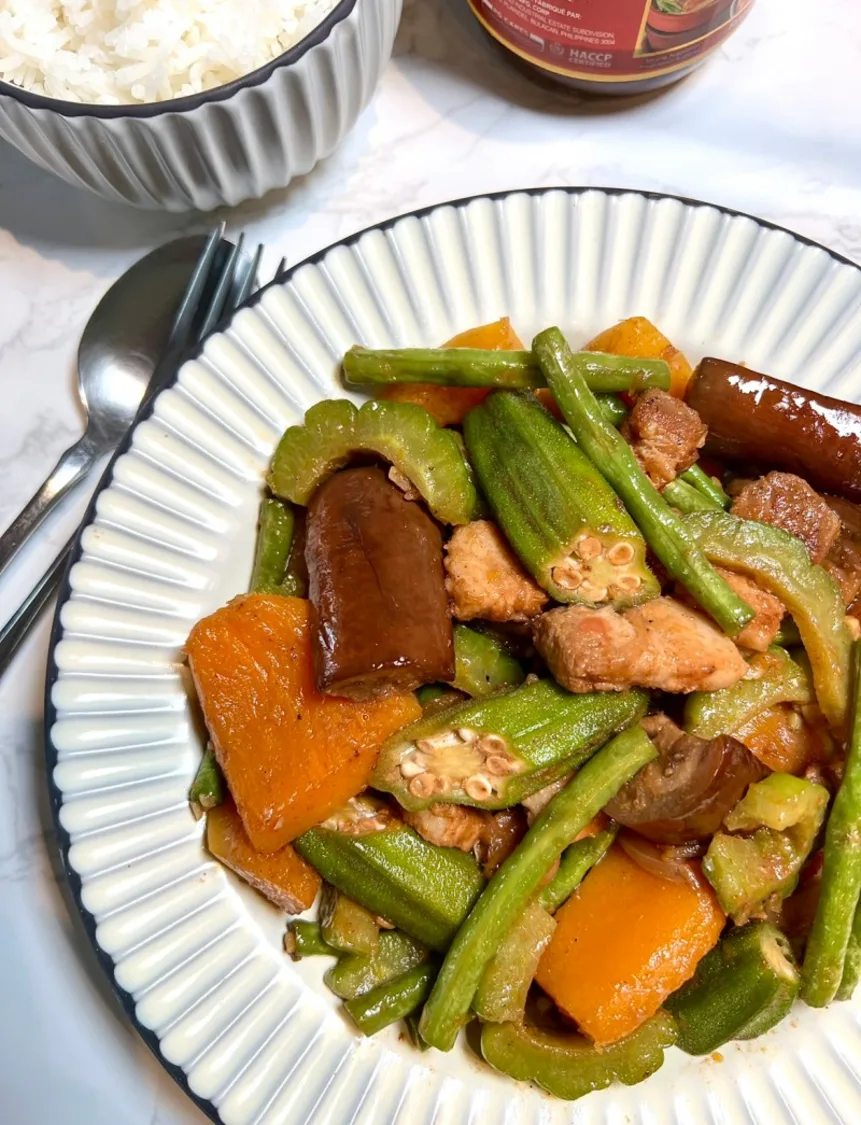
Pinakbet
A vegetable stew flavored with shrimp paste, featuring bitter melon, eggplant, and okra.
Ingredients
- •Bitter melon
- •Eggplant
- •Okra
- •String beans
- •Shrimp paste
- •Pork belly
Instructions
Prepare
Cut vegetables and saute pork belly until crispy.
Cook
Add vegetables and shrimp paste, steam until tender.
Pinakbet is a colorful vegetable stew that originated in the Ilocos region of the Philippines, showcasing the area's agricultural bounty. This rustic dish combines various tropical vegetables like bitter melon (ampalaya), eggplant, okra, and string beans, all flavored with bagoong (fermented shrimp paste) and often enhanced with bits of crispy pork belly.
The name "pinakbet" comes from the Ilocano word "pinakebbet," meaning "shrunk" or "shriveled," referring to how the vegetables are cooked until they're tender but not mushy. This cooking method helps concentrate the vegetables' flavors while maintaining their nutritional value. The dish reflects the Ilocano philosophy of simple cooking that brings out the natural tastes of ingredients.
Making pinakbet is relatively straightforward but requires attention to timing. The process typically begins by sautéing garlic, onions, and pork belly until the meat is crispy. The vegetables are then added in a specific order based on their cooking times, with harder vegetables like squash going in first, followed by bitter melon, eggplant, and finally the more delicate okra and string beans. The shrimp paste is added carefully to avoid overpowering the vegetables' natural flavors.
While the traditional Ilocano version is quite simple, other regions have developed their own variations. Some add tomatoes for extra acidity, while others include coconut milk for a creamier version. The amount of shrimp paste can vary significantly, with some preferring just a hint and others enjoying a more pronounced fermented flavor. Some modern interpretations even skip the pork belly for a vegetarian-friendly version.
In Filipino homes, pinakbet is typically served as a main dish with steamed rice. Some prefer to eat it with a dipping sauce of fish sauce and calamansi, while others enjoy it as is, letting the shrimp paste provide all the seasoning needed. The dish is particularly popular during the harvest season when vegetables are at their freshest.
From a nutritional standpoint, pinakbet is a powerhouse of vitamins and minerals. The variety of vegetables provides fiber, vitamins A and C, and various antioxidants. Bitter melon, a key ingredient, is known for its potential benefits in managing blood sugar levels. However, those watching their sodium intake should be mindful of the shrimp paste content. The dish is naturally gluten-free and can be made low-fat by omitting or reducing the pork belly. People with shellfish allergies should be cautious due to the shrimp paste, though some versions use fish sauce as an alternative.
